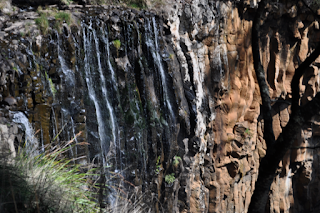I cannot let Mad March go by without mentioning Murphy’s Law
– commonly used to blame anything that goes wrong.
What Murphy’s Law really means
Although similar sentiments have been expressed right back to
the 1800s, the name Murphy’s Law arises
from physics and is attributed to Edward Murphy who reputedly, in the 1950s, developed
new measurement devices that failed to perform, and then said something like “If
there’s more than one way to do a job, and one of those ways will result in
disaster, then he will do it that way”. However there is some debate about its
origins and, over time, it has come to mean that anything that can go wrong
will go wrong, or to quote Colonel Stapp (who supposedly first publicly coined the
phrase) “Everything that can possibly go wrong will go wrong”.
Murphy in the workplace
In my workplace I would blame Murphy when:
- I would put extra preparation into a client session and they would subsequently fail to attend.
- I had spent many hours preparing a group session or talk and it was cancelled at the last minute.
- I would drag myself into work when feeling unwell, as I was concerned about a particular client, and then they would be a no show.
- The computer was down on the last day that statistics were due.
- The printer would not work when I needed to copy handouts for a session later that day.
- Clients urgently begged for appointments and then did not present .
On what occasions would you like to blame Murphy’s Law?
The usefulness of Murphy’s Law
Metaphorically blaming Murphy can inject humour and take the
sting out of an otherwise stressful situation. There is a Murphy’s Law café in
Darwin which could result in an interesting dining experience (I chose not to
test it out) and the term is often used in a humorous context.
It also reminds us that life is full of unpredictability and
that we need to allow for things to not go as planned.
But, of course, when I went to add this post, the internet was down and my husband had to use his phone to create a hot spot!
And then there is Yhprum’s Law, which is that:”anything that
can go right will go right” and is Murphy’s Law in reverse.
















